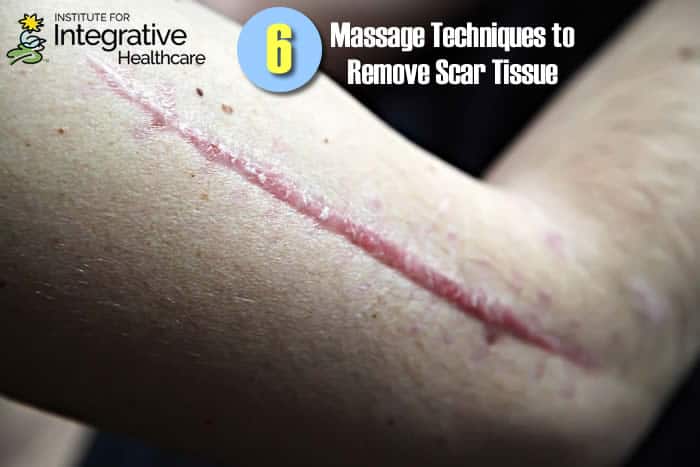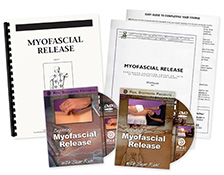

 Want to earn continuing education credit for this article? Learn more.
Want to earn continuing education credit for this article? Learn more.
Scars develop on the skin’s surface as the result of burns, deep lacerations or a variety of other injuries that penetrate or interrupt the skin’s integrity. Possessing an amazing capacity to heal and regenerate, the skin forms a scab over a wound within three to four days following an injury. By day ten the scab typically shrinks and sloughs off as the body focuses on laying down collagen fibers to strengthen the former site of injury. The damaged tissue can be in recovery between three months to over a year before it returns to full strength. Additionally, some diseases or skin disorders (such as acne) may also result in scar tissue formation. While scars can result from a variety of traumatic events to the skin, they share some common characteristics. As a general rule, the earlier and more consistently scar tissue is exercised, massaged and warmed, the less possibility of developing any long-term concerns.
Scar Traits
While the degree of scar formation varies from person to person, there are some distinguishing characteristics:
- Becomes hard and non-pliable
- Bands of fibers on or below the surface
- Skin tightens or shortens. When crossing a joint, this contracture may limit range of motion, comprise function or cause deformity.
- Becomes dry and reopens to form a wound if not managed properly. This is especially true for skin grafts, which do not produce oil or sweat.
Long-Term Effects
While the body’s formation of scar tissue is an awesome demonstration of self-preservation, the resulting fibrous mass can set the stage for problems down the road. Composed primarily of collagen, scar tissue’s fibrosity prohibits adequate circulation. In addition to the physical limitations of collagenous tissue, the lack of blood flow and lymph drainage occurring in scar tissue makes it vulnerable to dysfunction. The resulting abnormal stress on a scar’s surrounding structures may include:
- Nerve impingement
- Pain
- Numbness
- Limited range of motion and flexibility
- Postural misalignment
- Muscle atrophy
- Tissue hypoxia
- An increase in potential for future injury
In fact, some professionals believe that scar tissue is the root of a majority of physical imbalances. Bodyworkers addressing scar tissue early in its development can help minimize any of the preceding secondary scar tissue problems.
Two Phases
A scar’s healing progression consists of two phases, immature and mature.
- Immature – Immediately after a wound heals, the scar is immature. During this period it may be painful, itchy or sensitive as nerve endings within the tissue heal. While it is typically red in appearance, most scars fade to normal flesh color with maturation. Exercise, massage and heat application will have the greatest positive effect on an immature scar.
- Mature – Depending on the size and depth of the wound, scar tissue will cease production 3 to 18 months following wound healing. When scar tissue is no longer produced, the scar is considered mature. While techniques to reduce scar tissue in a mature scar are effective, a more disciplined and vigorous approach is necessary.
Six Techniques
As soon as the wound is knitted, massage therapy can be performed. During the initial immature stages of wound recovery, it is imperative that a gentle approach be taken. The following six techniques are well-known ways bodyworkers can improve scar tissue:
- Manual Lymph Drainage optimizes lymphatic circulation and drainage around the injured area. Gentle, circular, draining motions within the scar itself or a firm stretch to the skin above and below the scar, first in a straight line and then in a circular motion, are two drainage techniques. Placing the fingers above the scar, then making gentle circular pumping motions on the scar also helps drain congested lymph fluid. As the massage therapist gently works down the scar, the tissue will feel softer. Drainage techniques should not hurt or make the scar redden.
- Myofascial Release helps ease constriction of the affected tissue. To stretch the skin next to the scar, place two or three fingers at the beginning of the scar and stretch the skin above the scar in a parallel direction. Then move the fingers a quarter of an inch further along the scar and repeat the stretch of the adjacent tissue, working your way along the scar. An alternative method is to follow the same pattern of finger movements using a circular motion instead of straight stretches. Work your way along the scar in a clockwise and counterclockwise fashion.
- Deep Transverse Friction can prevent adhesion formation and rupture unwanted adhesions. Applied directly to the lesion and transverse to the direction of the fibers, this deep tissue massage technique can yield desirable results in a mature or immature scar. Never progress beyond a client’s comfort level.
- Lubrication of the scar helps soften and increase its pliability. Mediums such as lotion, castor oil, vitamin E oil or other oil can prevent the scar from drying out and re-opening.
- Stretching aids in increasing range of motion. This is most important when approaching scars that cross over a joint. Scar tissue will lengthen after being stretched, especially if the stretch is sustained for several seconds and is combined with massage.
- Heat Application helps the pliability and flexibility of the scar. Common tools used to apply heat are paraffin wax, moist heat packs or ultrasound.
Cautions
Massage therapists must use their training and best judgment when deciding whether or not to proceed with scar massage. While treatment is most effective when a scar is still in its immature phase, it is also a wise time to seek physician permission. A few additional cautions for immature scars include:
- Take extreme care with radiated tissues, as the skin is delicate and can break easily.
- Aside from friction massage, do not continue if your actions cause pain or increase tissue redness.
- Never perform massage on any open lesions.
- To prevent accidental sliding of the fingers, apply a lubricating medium after your primary work.
As a massage therapist, always keep in mind that scar tissue may be at the root of the physical imbalance you are preparing to address. If a scar is found to play a part in your client’s dysfunction, consider combining the six scar-reducing techniques described earlier. Not only can you minimize a scar’s appearance with bodywork, yet you can therapeutically correct the cause of your client’s physical ailments.
Earn continuing education credit for this article contained in our Skin Pathologies series. Click here to enroll.
More Information:
Scar Tissue: Massage Benefits and Precautions















14 Responses to Six Massage Techniques to Remove Scar Tissue